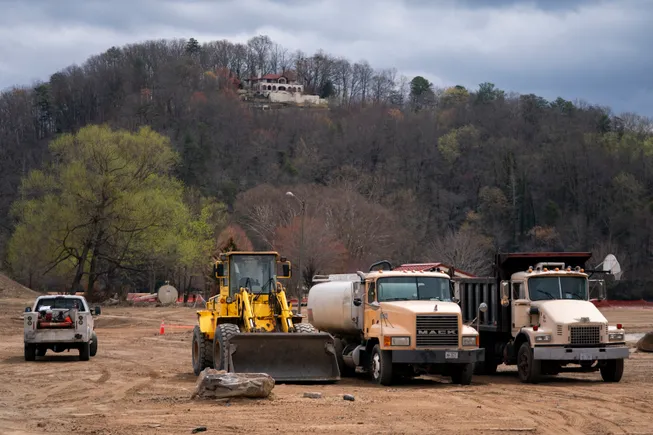Dive Brief:
- Nonresidential construction spending increased 0.3% in February to a seasonally adjusted annual rate of $1.26 trillion, the highest level on record, according to an Associated Builders and Contractors analysis of U.S. Census Bureau data released Tuesday.
- Spending rose in nine of the 16 nonresidential subcategories, led by a surge in highway and street construction, which accounted for over 40% of the overall monthly gain, said Anirban Basu, ABC chief economist. Private nonresidential spending increased 0.4% during the month, while public spending jumped 0.2%.
- Despite the record-setting total, growth remains uneven across project types, as contractors face high interest rates and trade policy uncertainty, said Basu.
Dive Insight:
Although spending may be at an all-time high, recent hiring practices by contractors suggest they expect fewer opportunities in the near term, said Ken Simonson, chief economist at the Associated General Contractors of America. Hiring and job openings both dropped in February, potentially a foreshadowing of a construction slowdown, he said.
“Construction spending rebounded in February, following widespread severe weather that may have slowed projects in January,” said Simonson. “Investment remains positive compared to a year ago but the growth rate for all major categories has cooled, while contractors have trimmed hiring and slashed job openings.”
Simonson also said the record spending number doesn’t necessarily indicate a high water mark.
“I expect substantial additional spending on highway and rail projects, and possibly broadband internet buildout in poorly connected areas,” Simonson said. “There has been rapid growth in water, wastewater, and airport construction, so it is hard to tell if this has peaked yet.”
But despite the new monthly high, the pace of growth tells a different story, said Basu.
For example, public nonresidential construction spending jumped 6.1% compared to last February. Meanwhile, private nonresidential spending hasn’t been able to match broader economic metrics.
“Unfortunately, private sector spending has not kept pace and is up just 2.5% since last February, a rate of increase slower than economywide inflation,” said Basu in the release. “The mix of high interest rates, tight lending standards and unprecedented uncertainty regarding trade policy will continue to weigh on private sector construction in the coming months.”

